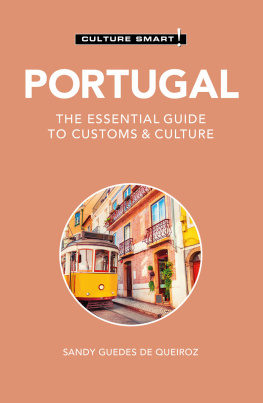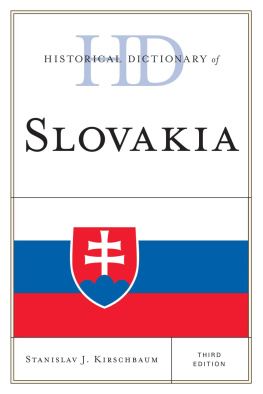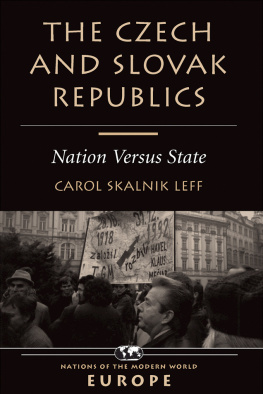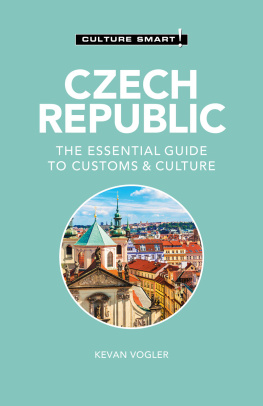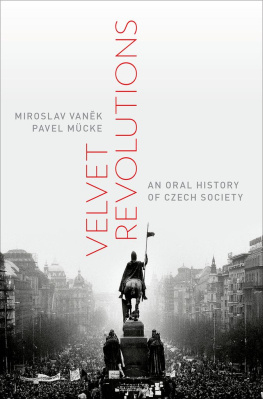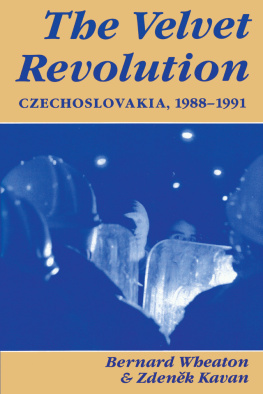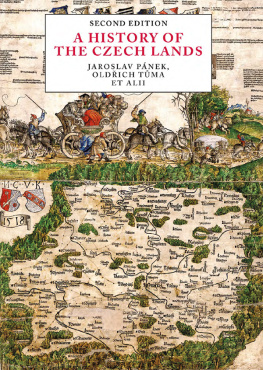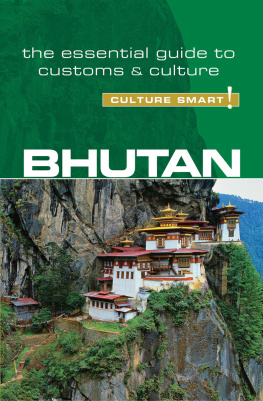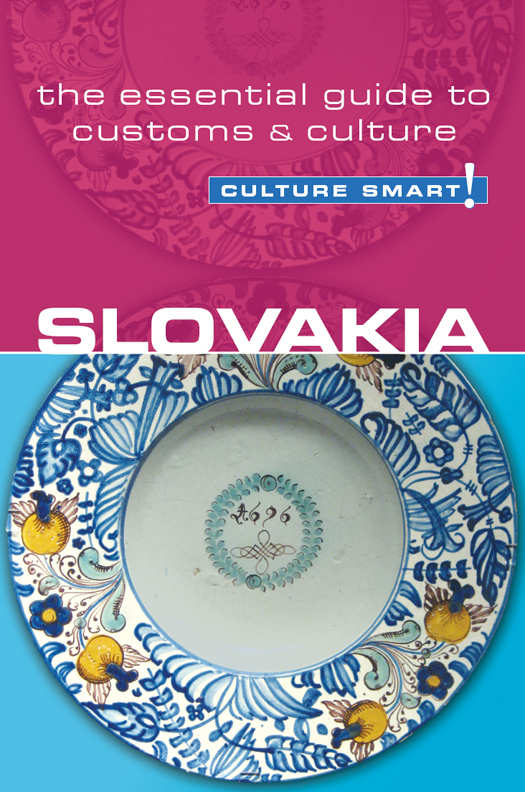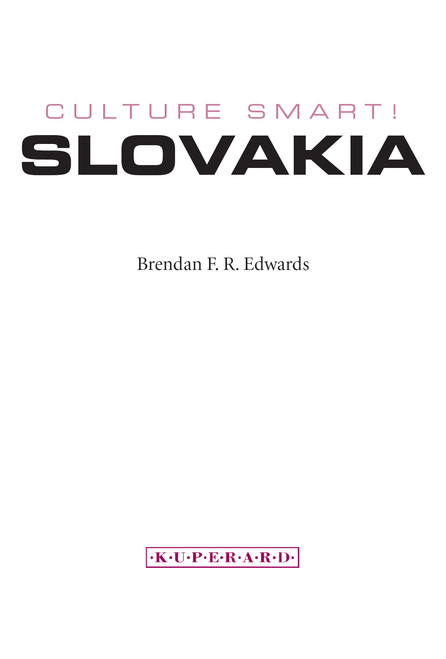eISBN: 978-1-85733-567-5
British Library Cataloguing in Publication Data
A CIP catalogue entry for this book is available from the British Library
Copyright 2011 Kuperard
All rights reserved. No part of this publication may be reprinted or reproduced, stored in a retrieval system, or transmitted in any form or by any means without prior permission in writing from the publishers.
Culture Smart! is a registered trademark of Bravo Ltd
First published in Great Britain 2011
by Kuperard, an imprint of Bravo Ltd
59 Hutton Grove, London N12 8DS
Tel: +44 (0) 20 8446 2440 Fax: +44 (0) 20 8446 2441
www.culturesmart.co.uk
Inquiries:
Series Editor Geoffrey Chesler
Cover image: Ceramic dish from the Odler workshop, Dechtice, Slovakia, 1696. Creative Commons Attribution-Share Alike 3.0 Unported license, Leoboudv.
The photographs on are reproduced by permission of the author.
Images on the following pages reproduced under Creative Commons Attribution-Share Alike 3.0 Unported license: Romary/August 2004.
Reproduced under Creative Commons Attribution-Share Alike 2.5 Generic license: European Central Bank in accordance with decisions ECB/2003/4 and ECB/2003/5.
v3.1
About the Author
BRENDAN F. R. EDWARDS, M.A., M.L.I.S., Ph.D., is a Canadian academic and writer. He has spent every summer teaching in Slovakia since 2003, and in 20056 lived in the Slovak city of Trnava, where he taught English to high school, university, and private students. He has also lived and worked in Romania, and collaborated on several texts on Slovakia and Central Europe, including Pictoria: The Early History of Slovakia in Images by Pavel Dvok (2006), and Migrating Memories: Central Europeans in Canada (2 vols., Central European Association for Canadian Studies, 2010). He is the author of several scholarly articles relating to Canada and Slovakia, as well as Paper Talk: A History of Libraries, Print Culture, and Aboriginal Peoples in Canada before 1960 (Scarecrow Press, 2005).
The Culture Smart! series is continuing to expand. For further information and latest titles visit
www.culturesmart.co.uk
The publishers would like to thank CultureSmart!Consulting for its help in researching and developing the concept for this series.
CultureSmart!Consulting creates tailor-made seminars and consultancy programs to meet a wide range of corporate, public-sector, and individual needs. Whether delivering courses on multicultural team building in the USA, preparing Chinese engineers for a posting in Europe, training call-center staff in India, or raising the awareness of police forces to the needs of diverse ethnic communities, it provides essential, practical, and powerful skills worldwide to an increasingly international workforce.
For details, visit www.culturesmartconsulting.com
CultureSmart!Consulting and CultureSmart! guides have both contributed to and featured regularly in the weekly travel program Fast Track on BBC World TV.
contents
Map of Slovakia
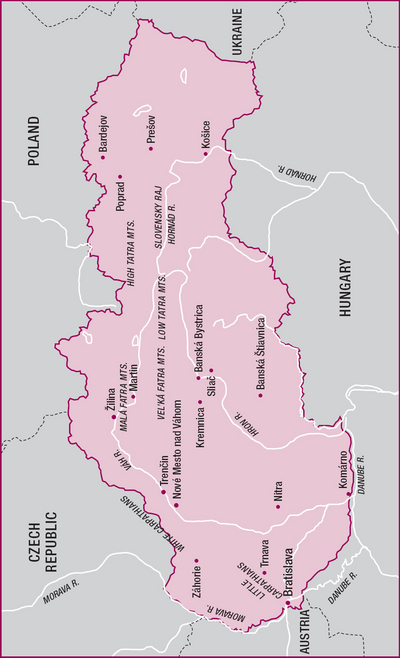
introduction
For most North Americans and Western Europeans, there is little or no distinction between Czechs and Slovaks. Many, in fact, continue to refer to Czechoslovakia as though it still existed. Although it is true that for much of the twentieth century Czechs and Slovaks lived together in a single state, their languages are quite similar, and many have intermarried, there are important differences between them. These differences, in part, explain the Velvet Divorce of 1993 and the rebirth of a sovereign Slovak state, separate from the Czechs. This book aims to introduce you to the Slovaks unique cultural characteristics, and to equip you with enough human information to get the very best out of your visit.
Generally speaking, the Slovaks are more Slavic than the Czechstheir pace of life is somewhat slower, and their spare time is more often filled with friends, family, and music. Since 1993, the Czech Republic has blossomed. Slovakia, on the other hand, initially struggled as a sovereign state, with an insular government and a low international profile. But in 2004 Slovakia joined the European Union alongside the Czech Republic. Now that it has EU membership and a relatively healthy industrial economy, Europeans are starting to take notice. In recent years Slovakia has demonstrated a confidence all its own. Even though it has been largely overlooked as the Czech Republics little sister, Slovakia has much to offer and has been referred to as the economic tiger of Europe.
The Slovaks are thought to be resistant to change, if not inflexible, and many Slovaks, when asked, confirm this to be true. Yet the Slovak people have witnessed many changes in the last twenty yearsthe fall of communism in the Velvet Revolution of 1989 and the Velvet Divorce of 1993, widespread economic diversification, expansion, and global influence, EU membership in 2004, and the adoption of the Euro in 2009. Change has been a constant in this young states short economic and political history, and the Slovaks have adapted to it with quiet optimism and a modest sense of pride.
As members of a small nation with a short political historybut an old cultureSlovaks respond readily to foreigners who are aware of their separate identity, master a few words of Slovak, and show an interest in their traditions. Firmly Central European (as opposed to Eastern European, which was largely a construct of the Cold War), they call their country the heart of Europea term applicable not only in geographic terms, but also in describing the Slovak character, which is warm, deeply hospitable, and immensely proud. And while Slovakia is not without its frustrations for foreigners, few visitors leave without a positive impression of the little big country.
Culture Smart! Slovakia describes what makes this country unique, and explains some of the quirks, pitfalls, and memorable aspects of Slovak life. Of course, generalization has its limitations, and there may well be exceptions to the advice and situations described here, but with this guide in hand, and an open mind, you will be well positioned to make the most of your Slovak travels and experiences.
Key Facts
| Official Name | Slovakia (Slovensko) or Slovak Republic (Slovensk Republika) | Born of the Velvet Divorce from the Czech Republic in 1993; member of the EU since 2004 |
| Capital City | Bratislava | Pop. 429,000 (approx.) |
| Major Cities | Koice, Trnava, Nitra, Bansk Bystrica, Preov, Trenn, ilina |
| Area | 18,932 sq. miles (49,035 sq. km) |
| Borders | Austria, Czech Republic, Poland, Ukraine, Hungary | Longest border with Hungary; entered Schengen border-free zone in 2007 |
| Climate | Between temperate and continental, with generally warm summers and cold, cloudy, humid winters |


